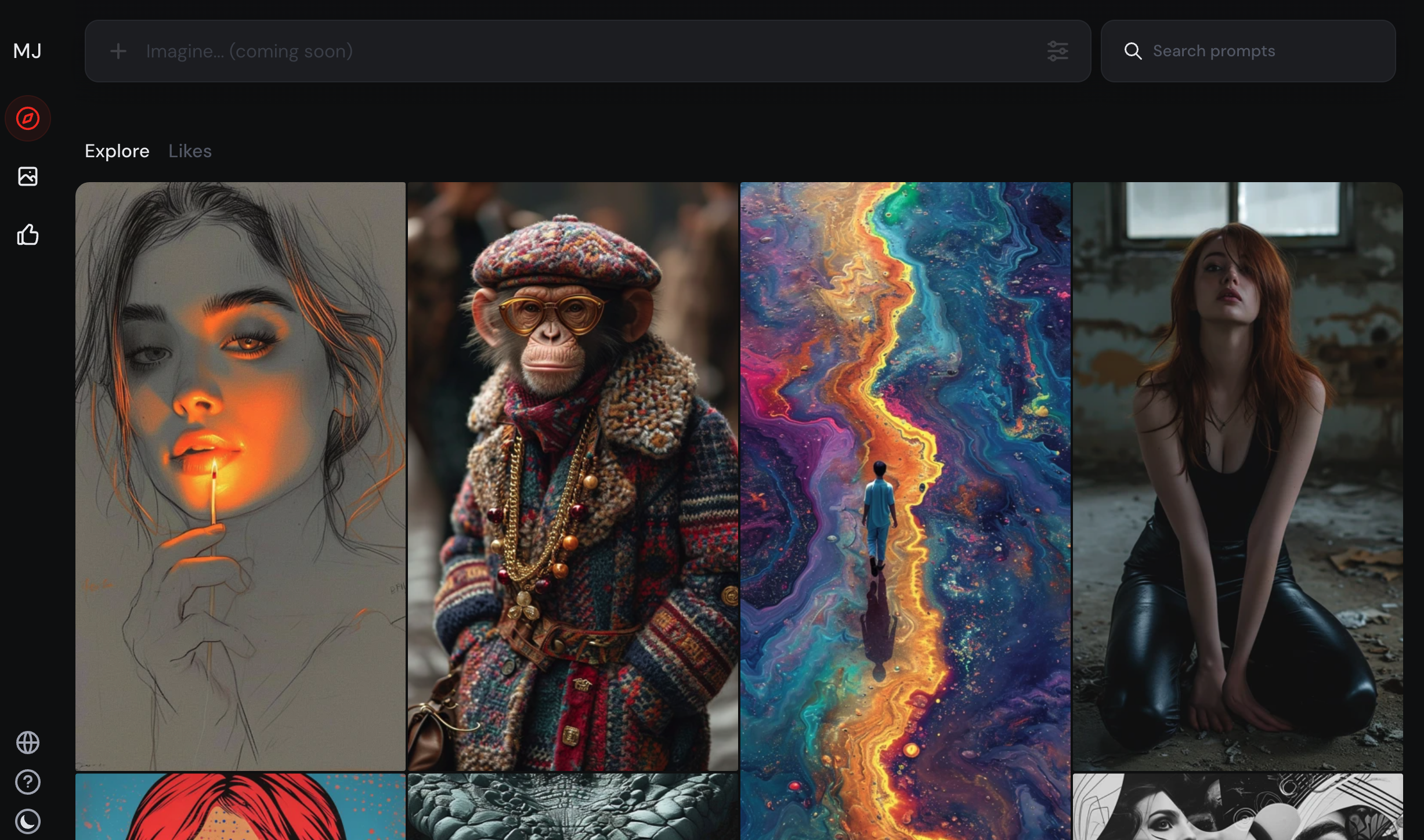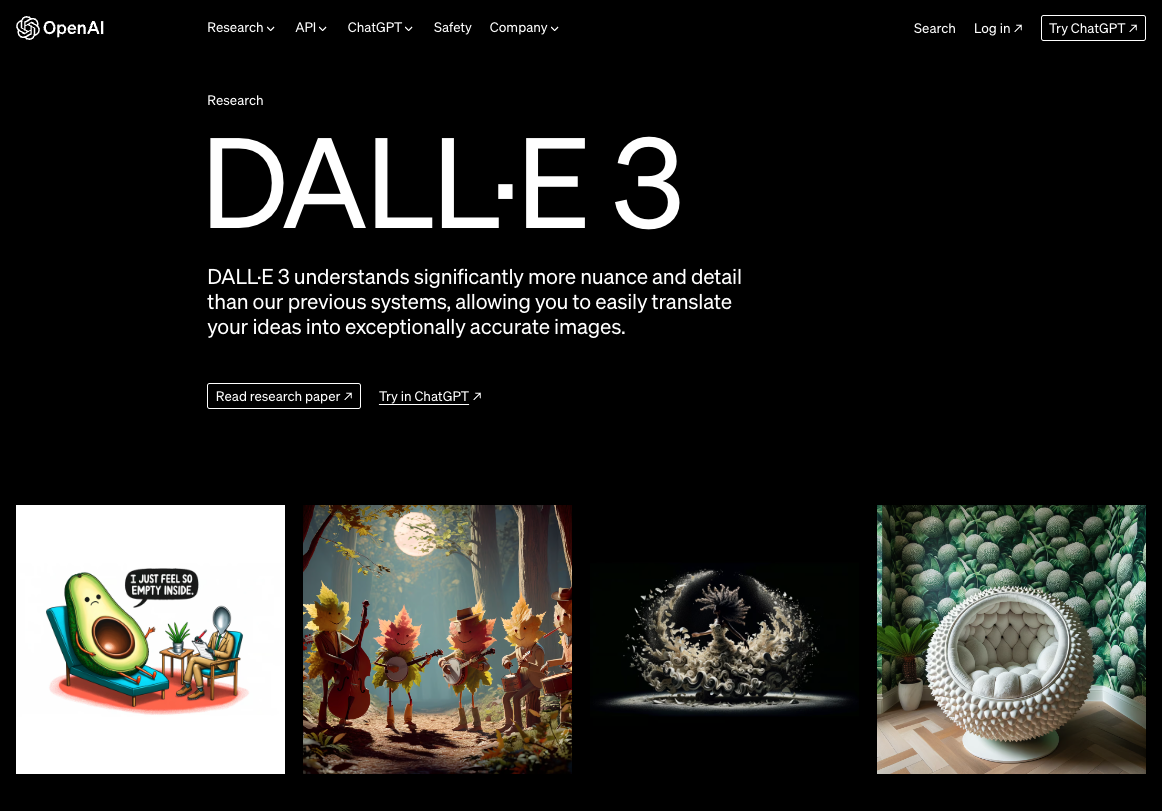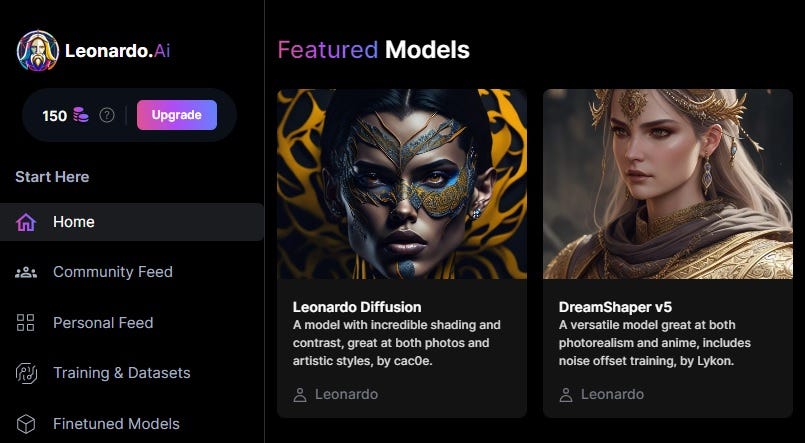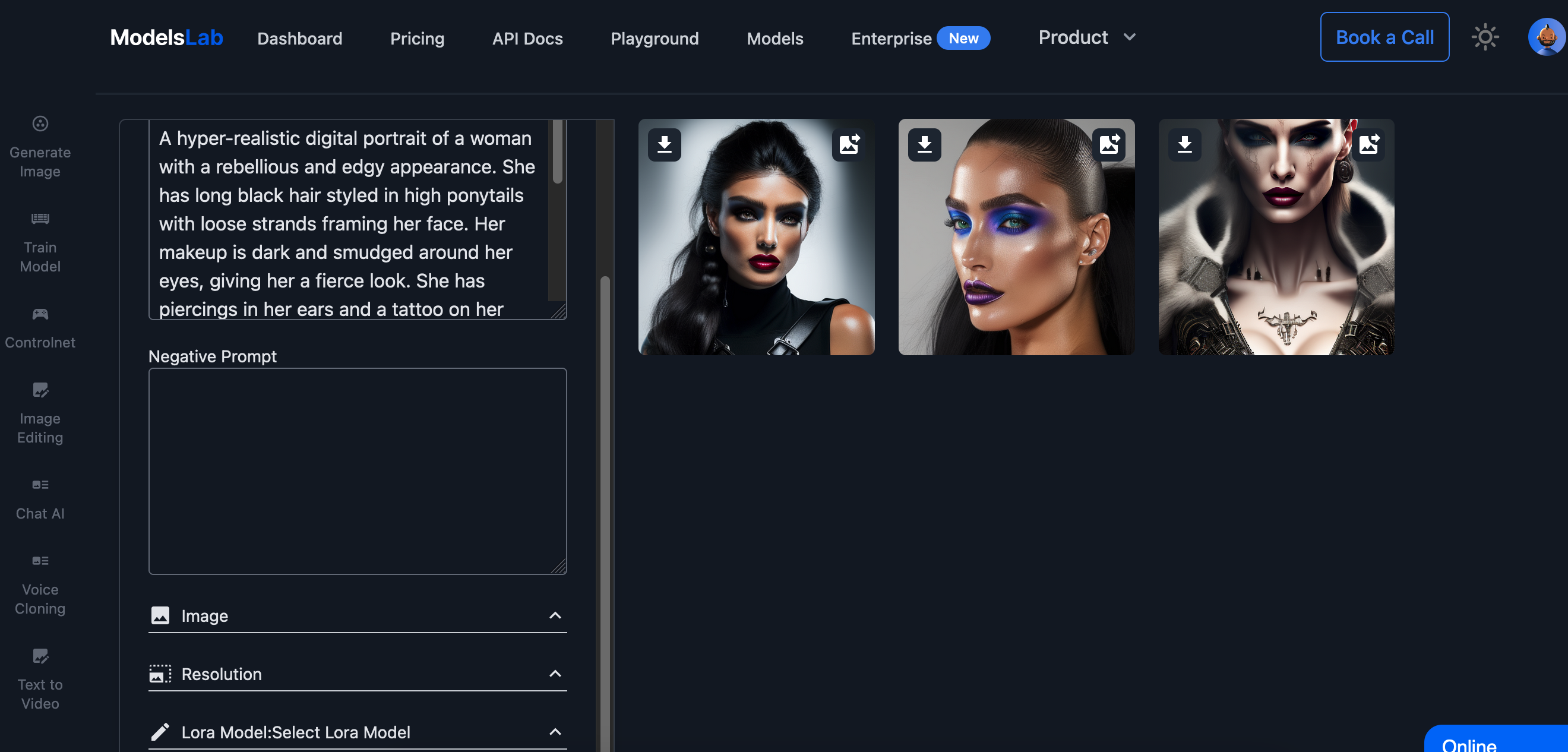The Best AI Image Generators in 2024
Written on . Posted in AI.
Artificial Intelligence has been at the forefront of technological advancements, and its impact on the visual arts is no exception. Image generation, once strictly the domain of human creativity and technical skill, is now increasingly augmented by AI's formidable capabilities. As we delve into 2024, a diverse array of AI image generators are not just on the scene; they dominate it, offering professionals and enthusiasts alike tools that are reshaping the world of design and visual expression.
In this comprehensive guide, we will introduce you to the most advanced AI image generators of 2024, exploring their functions, benefits, and the burgeoning potential they hold. Suitable for AI aficionados, tech-savvy individuals, and professional graphic designers, our roundup serves as a beacon guiding you through the vast ocean of digital creativity.
Understanding AI Image Generators
AI image generators are software programs that apply machine learning, particularly deep learning techniques, to create visual content. These tools typically rely on databases of existing images and can generate new, unique images based on textual descriptions or editing inputs. Their ability to comprehend complex instructions and translate them into compelling visual content is nothing short of astonishing. Not only can they create images from scratch, these generators can also manipulate and edit existing images, adding or removing elements to create an entirely different image. This powerful technology has vast implications for a wide variety of industries, including advertising, graphic design, and entertainment.
Benefits of AI Image Generators
The rise of AI image generators is solidified by their wide-ranging benefits:
Time-saving and Efficiency: AI can produce images in a fraction of the time required for traditional methods.
Enhanced Creativity and Customization: With AI, the only limit to image generation is the creator's imagination.
Cost-effectiveness and Accessibility: High-quality images can be created without the need for expensive software or extensive training.
Improved Quality and Realism: AI generators are increasingly adept at rendering realistic textures and details.
Top AI Image Generators in 2024
A closer look at the top contenders reshaping the landscape of digital artistry.
Midjourney: The Intuitive Creator's Companion
Midjourney stands out for its intuitive design and ability to understand intricate prompts to generate stunning imagery. In 2024, it has evolved to allow intricately detailed control, making it a favorite among graphic designers. It excels in generating images for more complex prompts, allowing you to fine-tune various design aspects such as dimensions, aspect ratios, text fonts, and colors.

Pros
Ease of Use: Midjourney's intuitive design makes it accessible to users of all skill levels, from beginners to seasoned professionals.
Detailed Control: The platform allows for intricate control over the image generation process, enabling users to fine-tune their creations to align with their vision.
Cutting-Edge Technology: Midjourney employs sophisticated AI technologies to interpret complex prompts and translate them into visually appealing images.
Cons
Potential Over-reliance: As with any AI tool, there's a risk of over-reliance, which can potentially stifle human creativity and originality.
Platform: Currently in beta, the only use case is through Discord.
Learning Curve: Despite its intuitive design, mastering the intricate controls of Midjourney may require considerable time and practice for some users.
DALL-E: The Synthesizer of Surrealism
This tool, inspired by the famous surrealist artist, continues to blaze a trail in generating whimsical and hyper-creative images. DALL-E incorporates a vast range of styles and concepts, making it perfect for brainstorming and prototyping.

Pros
Innovation and Creativity: DALL-E excels in generating unique and surrealistic images, offering a wealth of creative possibilities.
Versatile Styles and Concepts: The tool incorporates a vast array of styles and concepts, making it suitable for a wide range of projects.
Great for Brainstorming and Prototyping: With its capacity to generate a multitude of diverse and striking images, DALL-E is an excellent tool for brainstorming and prototyping.
Cons
Less Control: Contrary to other tools like Midjourney, DALL-E might not provide the same level of detailed control, which could be limiting for some users.
Unpredictable Outputs: Given its focus on surrealism and whimsy, the outputs might be too abstract or unpredictable for certain projects or tastes.
Requires Learning: Like any other tool, DALL-E has a learning curve. Users may need to spend some time understanding how to guide the AI towards the desired output effectively.
Leonardo: Blending the Past and Future
Leonardo AI has been a reliable alternative to Mid Journey for several months. While it is a premium model that requires an account, it offers a certain number of credits for free. By using these credits, you can generate AI images based on your text prompts. Leonardo AI provides options to download, copy, and even remove backgrounds from the generated images, giving you more flexibility in customization.

Pros
Classical Styles with Modern Flair: Leonardo excels in creating a blend of classical and modern art, making its output both distinctive and attractive.
Innovation with Familiarity: The application of traditional art styles offers a sense of familiarity, while the integration of modern elements injects innovation into the creations.
Versatility: Leonardo's capacity to incorporate various artistic elements makes it a versatile tool for different artistic projects.
Cons
Limited to Certain Art Styles: Since Leonardo focuses on classical art styles, it might not be suitable for projects requiring more contemporary or abstract styles.
Requires Artistic Knowledge: To fully utilize its capabilities, users may need to have a certain degree of understanding about different art styles and periods.
Complexity: The blending of old and new art styles can result in complex images that may not be suitable for all audiences or project requirements.
Firefly: The Speedy Visual Virtuoso
Firefly, the new kid on the block, is making waves due to its lightning-fast processing speeds. It is the tool of choice for creators who value efficiency without sacrificing quality in their visuals. While it is not free, it offers a high level of sophistication and customization options. Adobe Firefly can be purchased for $5 per month or as part of an Adobe plan.
Pros
Quick Processing: With its rapid processing speeds, Firefly ensures that creators can produce high-quality visuals in a fraction of the time.
Efficiency: The speed and convenience offered by Firefly make it an excellent tool for creators with demanding schedules or tight deadlines.
Quality Uncompromised: Despite its speed, Firefly does not compromise on the quality of the visuals it produces, ensuring that all outputs meet high artistic standards.
Cons
Requires High-end Hardware: Due to its heavy processing demands, Firefly may require high-end hardware for optimal performance.
Less Focus on Artistic Styles: While it excels in speed, Firefly may not offer the same depth of artistic style options as some other tools.
Learning Curve: The functionalities of Firefly, while powerful, may take some time for users to fully understand and utilize.
ModelsLab API Suite: The Backend Powerhouse
Stable Diffusion API is the gold standard for developers looking to integrate high-quality image generation into their applications. It's robust, customizable, and has been a driver behind the scenes on numerous platforms. One way to make use of the power would be through our API offering. Where you have a load of options when it comes to different models and styles which would be required to cater for your needs and outputs.

Pros
Robustness: Stable Diffusion API is a sturdy and dependable tool, helping developers maintain reliable integrations.
Customizability: The API provides extensive customization options to meet a variety of needs and preferences.
Proven Record: Its successful track record of powering various platforms lends credibility and assurance to new users.
Cons
Complexity: The depth and range of features may prove overwhelming for beginners.
Learning Curve: While the ModelsLab offers powerful features and customization options, it also comes with a steep learning curve. This could potentially slow down the development process, especially for beginners who are unfamiliar with the tool. Understanding its complex range of features and functions can take time and practice, which might be a significant downside for teams looking for quicker integrations. But over team will be always available for assistance.
Cost: Depending on the usage, the API can be more expensive than other alternatives available in the market. But luckily, we are open to talk. 😉
Use Cases and Examples
AI image generators have found a place in a variety of industries, from advertising and marketing to game development and architectural visualization. They offer a means to rapidly prototype ideas and create striking visuals that resonate with audiences.
Real-world examples abound. For instance, an advertising agency used DALL-E to create a series of ads that combined unlikely objects to striking effect, enhancing engagement and consumer interest. A game studio employed Midjourney to generate concept art for their fantasy environments, slashing pre-production timelines while boosting creativity.
A corporation could make use of training their own data for creating images of their own aesthetic and language. Fine tune it, upscale it, modify it. Make it their own, that’s where ModelsLab can come into picture to give you a flexible and dynamic field to improve on the existing data and get the outputs you need.
Considerations and Limitations
Despite their impressive capabilities, AI image generators come with their fair share of challenges such as the ongoing refinement of AI's understanding of context and emotional subtleties, concerns about the removal of human elements in art, and the potential perpetuation of biases present in their training data.
Future Trends and Developments
Looking forward, the trajectory for AI image generators points to even greater sophistication. Integration with virtual reality, real-time generation during live events, and adaptive learning algorithms that better mimic artistic intuition are just a few potential advancements. One pivotal trend is the intersection of AI and Augmented Reality (AR). Coupled with AI, AR can yield hyper-realistic, dynamic, and customizable visuals, revolutionizing industries like gaming, e-commerce, and education.
Additionally, advancements in Transfer Learning are anticipated. This technique will facilitate the application of pre-learned patterns in AI to new, related domains, elevating the quality and realism of generative images.
Lastly, we foresee improvements in ethical AI practices. As the technology matures, developers will design AI systems that minimize bias, promoting fair and accurate representation in generative images.
The future of generative images is brimming with potential, promising to push the boundaries of visual content creation.
Conclusion
The best AI image generators of 2024 stand as a testament to the rapid pace of innovation in AI and its applications. While not without limitations, the benefits—creativity augmentation, efficiency, and accessibility—are reshaping the landscape of visual production.
For AI enthusiasts, tech-savvy individuals, and graphic designers navigating this evolving domain, staying informed about these powerful tools is critical. AI Image Generation, Top AI Tools 2024, image generative tools, text-to-image API, and stable diffusion represent more than jargon; they herald a new paradigm in creative production.
Explore these tools, recognize their potential, and let them inspire a new wave of creativity and imagination in your work. The fusion of artificial intellect and human creativity is the next frontier—and it’s already here.
